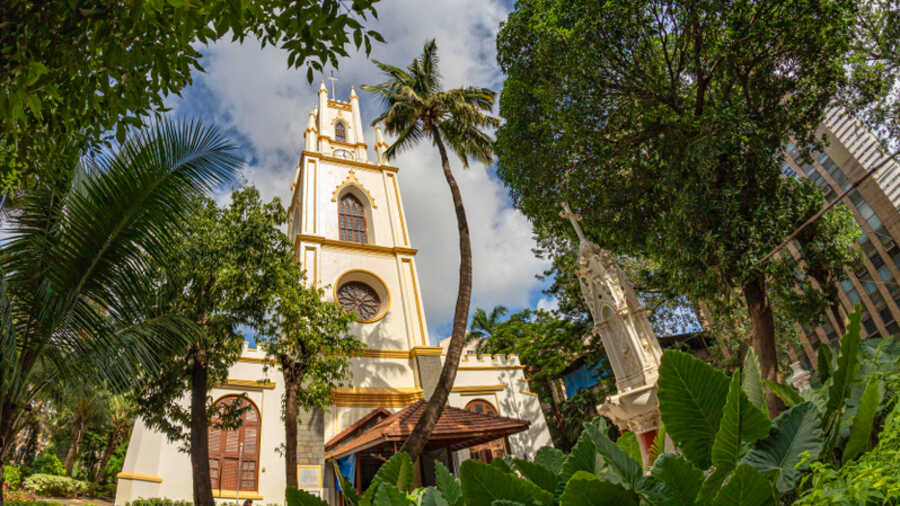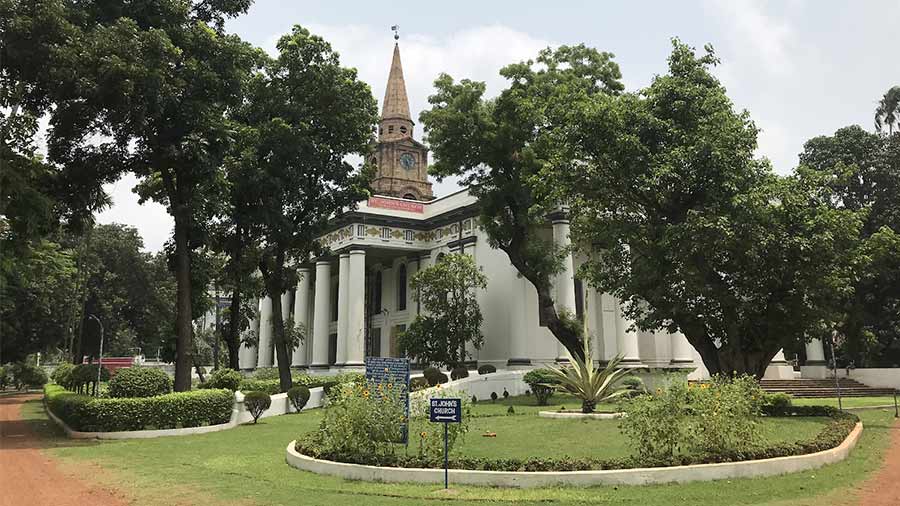Churchgate — one of Mumbai’s major entry points. Ever wondered why the area and railway station in south Mumbai is called as such? The 'church' in the name refers to the 300-year-old St Thomas’ Cathedral Church. The ‘gate’ comes from the time when the southern part of Bombay had high walls and was called the Fort area. One of the three gates of the wall was located near the church and came to be known as Church Gate. The nearby station got the same name, as did the surrounding neighbourhood. The walls and gates were demolished in 1860, but the name stuck.
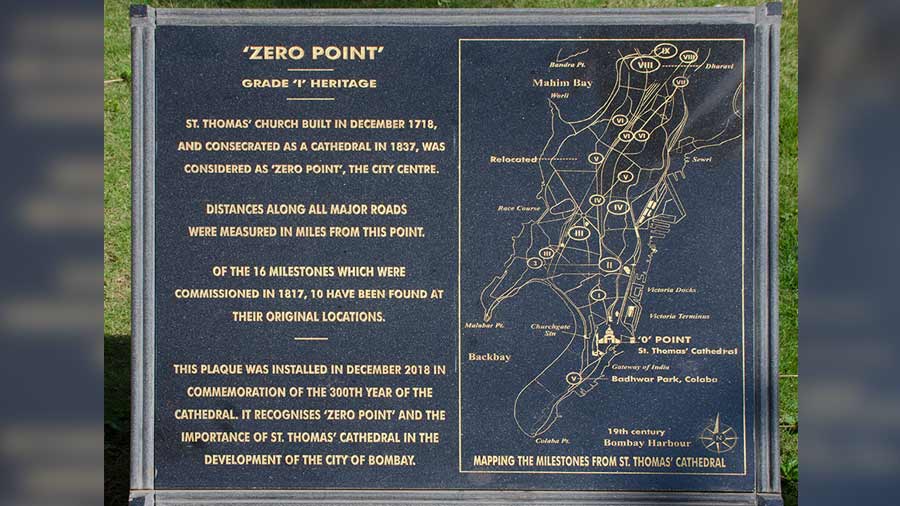
The 'Zero Point' plaque outside the church Rangan Datta
Zero Point
St. Thomas’ church stood at the northwest corner of the Fort area and served as the zero point for Bombay. Distances along all major roads were measured from this point. A plaque at the entrance of the church mentions the story of Mumbai’s zero point with a map. According to the plaque, 16 milestones — each four feet high — were laid out from the church, leading to the north of the city. Today, 11 of the 16 milestones have been located, many on unassuming corners of kerbs and submerged due to the heightened road levels. The plaque was placed in December 2018 to commemorate the tercentenary celebration of the church.

The church tower and (right) the altar inside with stained-glass windows Rangan Datta
Going back in time
The history of the church dates back to 1676, when the foundation stone was laid. After some progress, the construction was abandoned for several decades until Richard Cobbe, the chaplain of the East India Company, took up the initiative of completing it. It was opened to the public on Christmas Day, 1718.
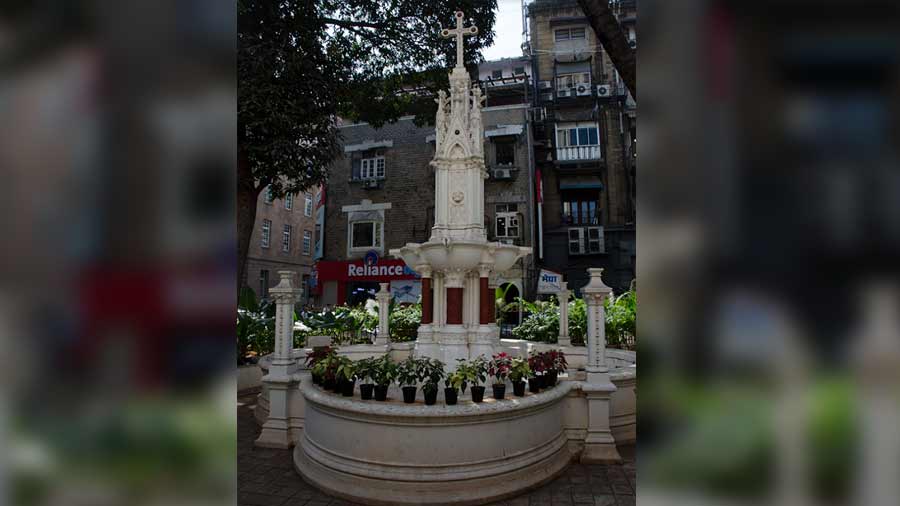
The now defunct marble fountain built by Cowasji Jehangir Readymoney Rangan Datta
It was years later, in 1816, when the church was dedicated to St. Thomas by Thomas Middleton, the first bishop of Calcutta. In July 1837, the Anglican church was converted into a cathedral and came to be known as St. Thomas’ Cathedral and served as the seat of the bishop of Bombay. The plaque explaining the zero point is outside, next to an ornate marble fountain built in 1864 by Parsi entrepreneur and philanthropist Cowasji Jehangir Readymoney.
The building is located in one of the busiest areas of the city and close to another Mumbai landmark, Horniman Circle Garden. Inside, however, is an oasis of peace with beautiful interiors and a repository of historically significant memorabilia.

Inside the church Rangan Datta
Art and history
Inside the church, a central passageway paved with marble leads to an altar with stained-glass windows. Another similar window with stained-glass art is in the southwest corner along with several plaques of notable servants of the East India Company and other notable Englishmen and women.
In the southeast corner is what seems like a sarcophagus showing the first bishop of Bombay, Thomas Carr, in eternal rest. It is in fact a memorial built for the bishop.
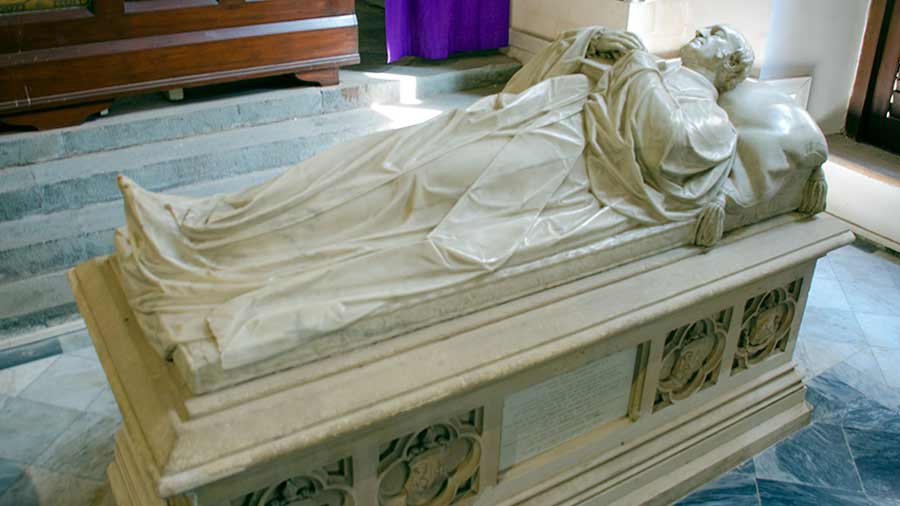
The memorial of Thomas Carr, Bombay's first bishop Rangan Datta
Two chairs in the front row of the church are of particular historical importance — King George V and his wife Queen Mary attended the church service in 1911 and sat in these chairs before travelling to Delhi for the transfer of power. Brass plates attached to the chairs mention the historic event. A pew in front of the two royal chairs is the one used by Mother Teresa in 1989.
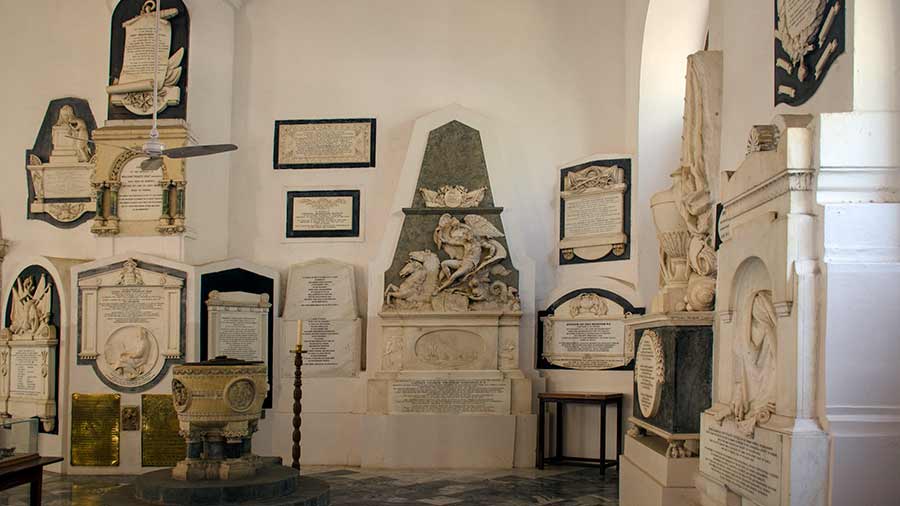
Plaques and memorabilia inside the church notable servants of the East India Company and other notable Englishmen and women Rangan Datta
Travel details:
St. Thomas’ Cathedral, Mumbai, is an active place of worship with regular prayer service held every Sunday morning. The church remains open every day from 7am to 6pm and photography is allowed.
